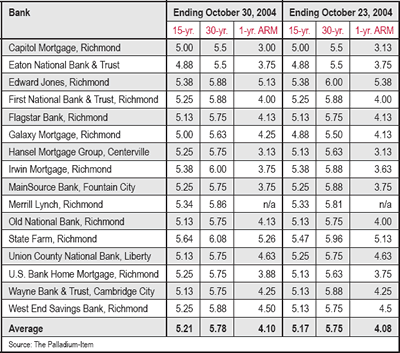Richmond
Indiana University East, Richmond
The Richmond-Connersville-New Castle (RCNC) area economy is experiencing a slow recovery. A significant number of firms are operating below full capacity.
The manufacturing sector has not fully returned to normal conditions. Some firms are having increased demand for their products while others are not. This is partly due to globalization, along with its concomitant infringement of intellectual property or the lack of a level playing field. On top of this, rising prices for industrial commodities (including fuel) translate into rising product prices, which may not be competitive with foreign producer prices.
The national recovery, now in its third year, is not producing robust job growth as in the 1990s. To date, over 1.7 million jobs have been created and this is relevant to RCNC, which is interdependent with the national economy.
The September 2004 figures, released by Indiana Department of Workforce Development, showed that total employment in Wayne, Fayette, and Henry counties was 65,340 out of a labor force of 70,035. For Indiana and the United States, it was 3.0 million and 139.6 million, respectively. The non-seasonally adjusted unemployment rates in the tri-county area were 5.8 percent, 9.5 percent, and 6.9 percent respectively, up from September 2003. These rates were higher than both the state rate of 5.2 percent and the national rate of 5.4 percent (see Table 1). From the national perspective, labor markets may be closer to being in balance than they would be if employment growth were the sole criterion for normalcy.
Table 1
Labor Force Statistics, September 2003 and September 2004
Click for larger image
It is also important to note that productivity, that is, output per worker hour, has been growing at an annual rate of more than 5 percent since November 2001. Such growth is far above the average productivity growth rate of 2 percent between 1996 and 2001. Rising productivity means firms hire fewer workers to produce the same output and the resultant job losses are structural. For Wayne, Fayette, and Henry counties, manufacturing employment represents 19.3 percent, 27.8 percent, and 15.6 percent, respectively, of total employment. If the high productivity growth rates continue, employment growth would be sluggish in the region.
Unlike manufacturing, the services sector accounts for most of the total employment in RCNC. Reid Hospital and Health Care Services is building a $250 million hospital complex off of Chester Boulevard in Richmond. It is the largest capital investment in the history of Richmond and east central Indiana. This investment, combined with internal business expansions and successful business prospects by the Economic Development Corporation of Wayne County, is likely to generate job growth.
Like services, the housing sector is holding steady. Total sales volume for houses is slightly better than last year’s. This is attributable to low mortgage rates. At the end of October 2004, local financial institutions offered rates of 5.21 percent, 5.78 percent, and 4.10 percent, respectively, for fifteen-year, thirty-year, and one-year adjustable mortgages (see Table 2). These rates were somewhat lower than last year’s.
Table 2
RCNC Area Mortgage Rates, Selected Weeks
Click for larger image
Low interest rates in the past three years helped fuel a surge in the number of mortgage originations (that is, new-home purchases) and refinancing of current mortgages. Also, government-sponsored home loan programs, including those from the Veterans Administration and Federal Housing Administration, helped first-time home buyers make the leap.
The new-home buyers included transferred people and “empty nest” households wanting to downsize. The local median price of a home is $92,000, which is substantially less than the national median of over $180,000. It is instructive to note that the price-rent ratio for the United States and many regional markets is much higher than its historical value.
Now that the presidential election is over, it has removed an element of uncertainty confronting businesses, consumers, and investors. Consequently, I expect improved economic conditions in RCNC in the coming year.
Also in this Issue…





